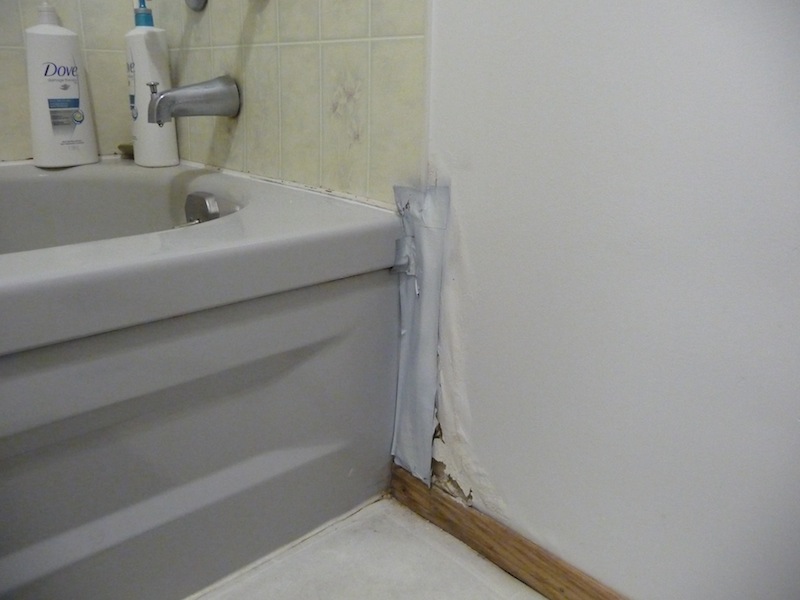Just how do you feel in regards to Looking for Signs of Water Damage in the Bathroom?
The shower room is extremely susceptible for moist buildup and possible water damages due to the constant use of water in it. This article uses easy examination techniques to aid discovering water damage dangers.
The regular use of water in the washroom makes it very prone for damp buildup as well as potential water damage. By inspecting it frequently, you can reduce water associated problems.
The complying with set of assessments is very easy to carry out and also should be done when in every 3 months in order to keep your shower room healthy and to stop potential water problems brought on by the bathtub, the shower, pipeline joints and plumbing, sinks, cupboards, and also the toilet
Do not disregard executing these examinations as well as be detailed while doing them. Remember that these easy examinations can conserve you a great deal of money by providing very early indications for water damages
Tub and also Shower
The shower as well as bath tub require unique focus and upkeep. Examine the tiles as well as change if broken. Make certain that there is no missing out on grout in between the floor tiles. Inspect as well as change cracked caulking at joints where the wall surfaces fulfill the floor or the tub. Obstructed drains as well as pipelines troubles will certainly prevent the bathtub from drying as well as might show serious problems below the tub. Talk to a specialist quickly to prevent structural damage. Take note of discolorations or soft areas around the tub wall surfaces as they might show an inner leakage.
Plumbing
Signs for water damages are tough to identify since most pipelines are mounted inside the wall surfaces.
Pay unique focus to floor covering and also wall surfaces dampness and also discolorations as they might show an invisible plumbing trouble. Inspect dampness degrees in adjacent areas too.
Sinks and Cabinets
Sinks and cabinets are exposed to wetness as well as humidity everyday as well as are usually ignored. Evaluate consistently under the sink and also on the kitchen counter over it. Fix any kind of drip in the catch as it might recommend drainpipe troubles. Check out the sink, slow-moving draining pipelines might show an obstructed drainpipe. Change sink seals if they are split or loose.
The Bathroom
The bathroom is a susceptible water junction. Check the water lines and search for leakages around the bathroom seat, in the hose pipe, and under the water container. If you identify any type of indications of moisture on the flooring around the commode, check for leaks in the toilet edge as well as storage tank seals.
Be aware that hanging bathroom bowl deodorants increases the opportunities for obstructions.
Water Damage Signs In The Bathroom To Avoid Cleanup
Musty smell
This is one of the easiest signs to catch because musty smells are so odorous. The damp, earthy, moldy smell should be a big red flag. The smell will develop when moisture gets trapped in surfaces, and begins to facilitate mold growth. Leaking pipes under cabinets, inside walls, and behind shower fixtures will cause moisture to stay trapped and not dry, which will lead to mold growth and spread. As soon as you notice any musty smells in your bathroom, have it checked for hidden water damage and cleanup signs.
Visible mold
If the smell isn’t there to give it away, sometimes you will actually see mold growth. Finding mold in your bathroom is a serious problem, because mold is very harmful to your health. By the time mold growth is visible, it also means that water damage has already occurred and been present for some time. The only way the mold problem can be resolved is to find the source of the moisture and get it stopped. To safely and adequately remove mold, you need to have professionals handle the remediation. Do not waste any time in getting mold problems addressed, fixed, and sanitized so that you can protect you and your family from the many respiratory symptoms caused by mold exposure.
Damaged floors
Bathroom floors should be able to withstand some exposure to water while still remaining in good condition. However, when excess exposure or water leaks occur, they will begin to damage even the most water-resistant flooring. If you notice any cracking, bubbling, staining, or warping on your bathroom floors, there is probably a water leak somewhere causing the distortion. If you notice areas of the floor have become softer, or even have a spongy feeling, there is probably damage to the subfloor. Subflooring is typically made up of plywood. When plywood is exposed to water or moisture, it will absorb it. Once it has become saturated, the weight of the excess water will cause the wood to swell and soften. Check the floors in your bathroom frequently to catch any of these sings before they lead to damaged subflooring.
Changes on walls
When water leaks behind walls, it will cause changes in the drywall. Peeling plaster, blistering paint, and soggy wallpaper are all good indicators that excess water is building up behind the wall. Water leaking behind drywall will cause it to swell and be soft to the tough. If you start to notice gaps along the trim of your walls, or where tile meets the wall, it could also be a strong indicator that there is a leak behind the wall. Any changes, distortion, or damage on the walls should be evaluated as soon as you notice it to prevent further water damage and cleanup.

As a keen person who reads on Common Causes of Water Damage in a Bathroom, I think sharing that excerpt was really useful. Are you aware of somebody who is looking into How to Fix a Water Damage Bathroom? Why not promote it. I appreciate reading our article about How to Prevent Bathroom Water Damage.
Book